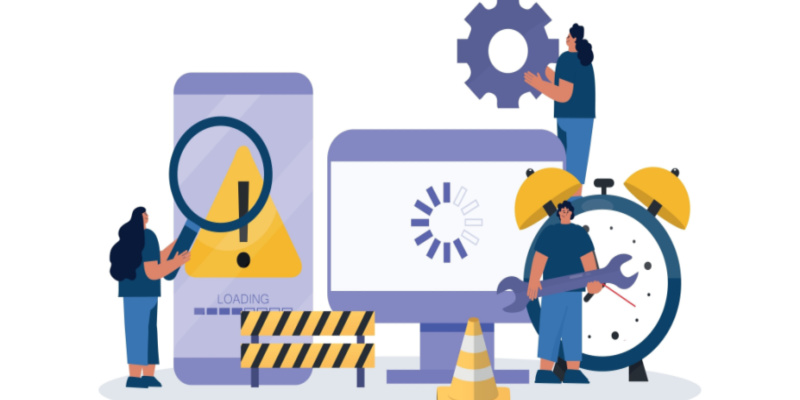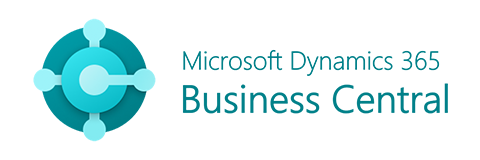- System Performance Decline: Lagging or crashing frequently
Have you noticed your system lagging or crashing frequently? It may be time to consider upgrading your ERP system. An old system can struggle to keep up with modern demands, leading to performance decline. By investing in an upgrade, you can improve efficiency and avoid frustrating delays.
Upgrading your ERP system is not just about fixing lagging issues; it’s also a strategic investment in the future of your business. A more efficient system means better productivity and customer satisfaction. Don’t let an outdated system hold you back; take the leap and upgrade for better performance and growth opportunities.
In today’s fast-paced digital world, staying ahead means being proactive about technology upgrades. The benefits of a new ERP system go beyond just avoiding crashes; it’s about setting yourself up for success in a competitive market. Don’t wait until problems become overwhelming; seize the opportunity to enhance your business operations now through an upgrade.
- Lack of customisation: Unable to meet business needs
Companies using outdated ERP systems often face the challenge of a lack of customisation, leading to an inability to meet their specific business needs. This limitation can hamper efficiency and hinder growth opportunities, as these systems are unable to adapt to changing market dynamics. While some may consider upgrading to a newer ERP system as a solution, the costs and potential disruptions can deter businesses from taking this step.
However, it’s essential for companies to consider the long-term benefits of investing in a more customisable ERP system that can better align with their evolving requirements. By embracing modern technologies and flexible solutions, businesses can not only address their current gaps but also future-proof their operations. Customisation plays a crucial role in staying competitive in today’s fast-paced business environment, providing organisations with the agility and scalability needed to stay ahead of the curve.
- Outdated interface: Difficult user experience, not intuitive
Imagine using a computer system that feels like it belongs in a museum rather than a modern workplace. Outdated interfaces can make even simple tasks seem like daunting challenges, leading to frustration among users. When an ERP system is old and clunky, not only does it slow down productivity, but it also hinders the ability to innovate and adapt to changing business needs.
The lack of intuitive design in outdated interfaces can lead to costly errors and wasted time. Users may find themselves constantly searching for basic functions or struggling to navigate through complex menus. Consider upgrading from an old interface as a strategic move to enhance efficiency and user satisfaction, not just a cosmetic change. By investing in modernising the interface, organisations can empower their employees to work more effectively and stay ahead of the competition.
- Integration Challenges: Inability to connect with new technologies
As companies strive to upgrade their operations by integrating new technologies, they often face the challenge of connecting these innovations with existing systems. One common issue is the inability to seamlessly integrate new software with legacy ERP systems, resulting in data silos and inefficiencies. This lack of connection can hinder productivity and limit the potential benefits that new technologies promise.
Moreover, the reluctance to let go of old systems and processes further complicates integration efforts. Employees may resist change due to their familiarity with existing tools, causing a barrier to adopting new technologies. This resistance can impede innovation and prevent organisations from fully leveraging the capabilities of modern solutions. Finding a balance between maintaining legacy systems and embracing new advancements is crucial for overcoming integration challenges effectively.
- High Maintenance Costs: Expenses outweigh benefits.
It’s no secret that maintaining an outdated ERP system can be a costly affair. The expenses involved in continuously upgrading and patching up an old system often outweigh the benefits it brings. Many businesses find themselves caught in a cycle of pouring money into a system that is unable to keep up with modern technological advancements.
The truth is, clinging to an obsolete ERP system can hinder productivity and innovation within an organization. Not only does it require constant troubleshooting and maintenance, but it also limits the capabilities of the business to adapt to changing market demands. In today’s fast-paced digital world, investing in a more efficient and up-to-date solution may actually lead to long-term cost savings and improved operational efficiency.
6.Employee Frustration: Complaints about the system’s inability to work
Employee frustration often stems from outdated systems hindering their productivity. Many workers express concerns about the inefficiencies caused by using old ERP systems that are no longer effective in today’s fast-paced work environment. This frustration can lead to decreased morale and job satisfaction, ultimately affecting the overall performance of the company.
An easy solution to this problem would be to upgrade the existing system to a more modern and efficient one. By investing in cutting-edge technology, companies can ensure that employees have the tools they need to work efficiently and effectively. Allowing employees the opportunity to provide feedback on new system features can also increase their sense of ownership and engagement with the technology, leading to improved workflows and outcomes.
In conclusion, upgrading your ERP system is essential for improving efficiency and driving growth in your organization. By utilising the latest technology and features, you can streamline processes, gain better insights, and make informed decisions. This will ultimately lead to increased productivity, cost savings, and a competitive edge in the market. Don’t wait until it’s too late; prioritise upgrading your ERP system today to set your business up for success in the future.




